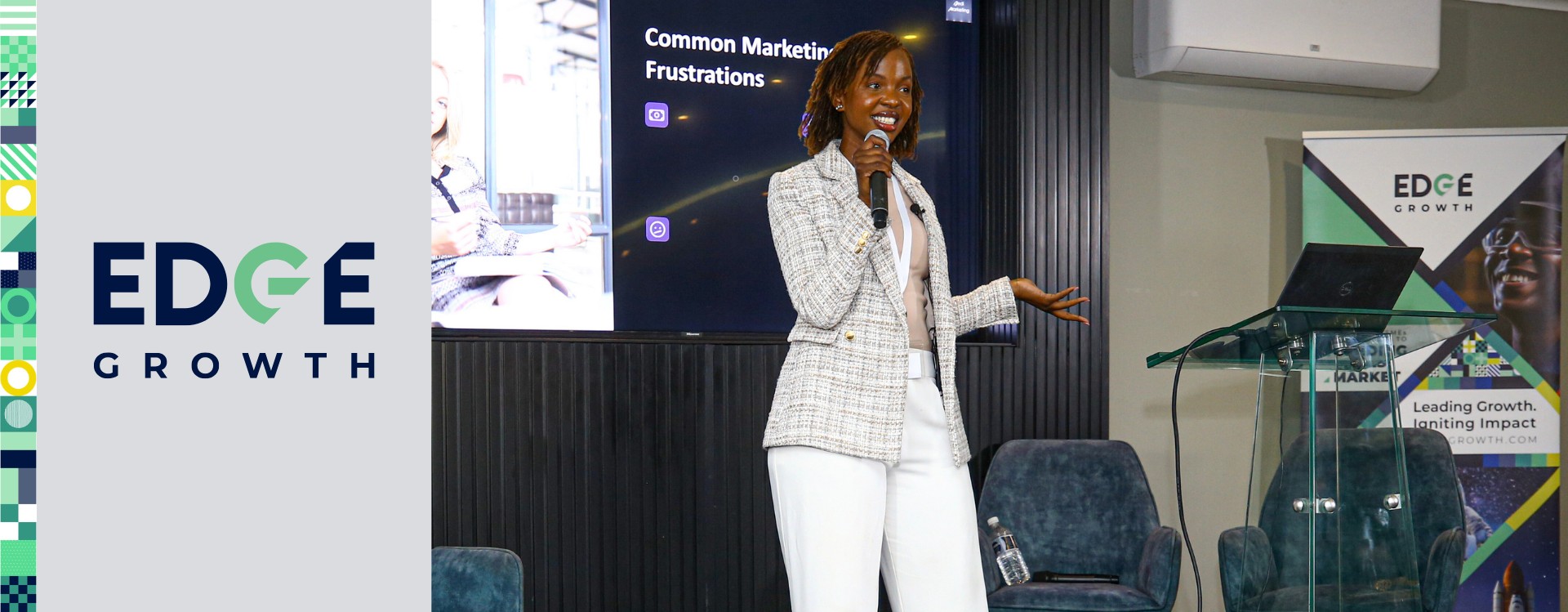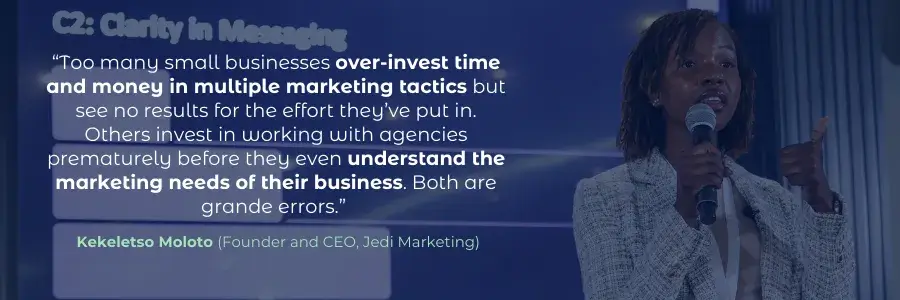
As a business owner navigating the complex landscape of digital marketing, you’ve likely found yourself studying competitors who appear to thrive on various platforms. You observe their messaging, examine their tactics, and naturally conclude that their strategies should work for your business as well.
This assumption results in many business owners mimicking ideas and tactics but not seeing success for themselves – resulting in wasted budgets, marketing burnout, and disillusionment about the opportunities and efficacy that lie in knowing how to reach and connect to your customers online.
Having observed this cycle of frustration across numerous boardrooms throughout her career, Kekeletso Moloto, Founder and Director of Jedi Marketing, took to the stage at Edge Growth’s Investee day to highlight the costly impact of misdirected marketing and presented a practical 3-part framework that eliminates guesswork and anchors marketing activity in clarity and results.
This framework is built on three essential principles:
1️⃣ 𝐂𝐥𝐚𝐫𝐢𝐭𝐲 𝐢𝐧 𝐎𝐛𝐣𝐞𝐜𝐭𝐢𝐯𝐞𝐬 2️⃣ 𝐂𝐥𝐚𝐫𝐢𝐭𝐲 𝐢𝐧 𝐌𝐞𝐬𝐬𝐚𝐠𝐢𝐧𝐠 3️⃣ 𝐂𝐥𝐚𝐫𝐢𝐭𝐲 𝐢𝐧 𝐓𝐚𝐜𝐭𝐢𝐜𝐬 – Each providing a foundation for making effective, sustainable marketing decisions.
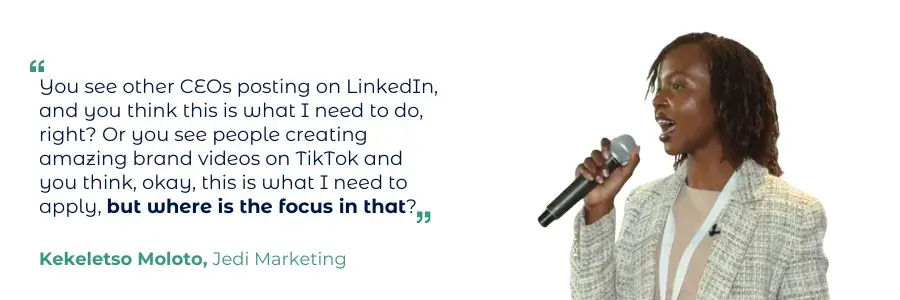
efore investing any resources in marketing initiatives, every business owner should address these three fundamental questions: ⬇️
1. What exactly am I trying to achieve for my business through digital marketing?
(Clarity in Objectives)
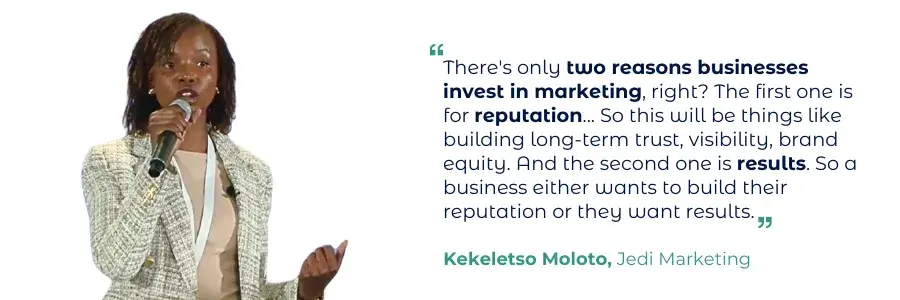
Before choosing between platforms or campaign types, business owners must first define their marketing objective.
The distinction is critical: does the business require 𝐢𝐦𝐦𝐞𝐝𝐢𝐚𝐭𝐞 𝐬𝐚𝐥𝐞𝐬 to sustain operations, or is the focus on 𝐛𝐮𝐢𝐥𝐝𝐢𝐧𝐠 𝐥𝐨𝐧𝐠-𝐭𝐞𝐫𝐦 𝐛𝐫𝐚𝐧𝐝 𝐞𝐪𝐮𝐢𝐭𝐲?
This decision should guide every subsequent marketing activity. Corporations may have the luxury of testing multiple approaches simultaneously. Small businesses rarely do. Each marketing Rand should be allocated to initiatives that directly serve the business’s current needs.
🟦 If short-term revenue is essential, prioritise tactics with a direct sales impact.
🟦 If the business is financially stable, investments in brand-building can strengthen positioning for future growth.
💡𝐊𝐞𝐲 𝐢𝐧𝐬𝐢𝐠𝐡𝐭: Well-defined objectives ensure every marketing activity contributes to measurable outcomes.
2. Who am I selling to, and what problem of theirs am I solving?
(Clarity in Messaging)

Entrepreneurs often become so immersed in daily operations that they default to industry jargon, unintentionally distancing themselves from their customers. Effective messaging requires simplicity, precision, and alignment with the customer’s own language.
To address this, Keke introduces the 𝐂𝐚𝐩𝐭𝐢𝐯𝐚𝐭𝐢𝐧𝐠 𝐎𝐧𝐞-𝐋𝐢𝐧𝐞𝐫 𝐅𝐨𝐫𝐦𝐮𝐥𝐚 – a method for distilling your value proposition into a single, clear statement. This one sentence should communicate:
🟢 Who you serve
🟢 What you help them achieve
🟢 How you help them achieve it
🟢 Address common objections
For example, rather than stating:
“𝐖𝐞 𝐟𝐚𝐜𝐢𝐥𝐢𝐭𝐚𝐭𝐞 𝐬𝐭𝐫𝐚𝐭𝐞𝐠𝐢𝐜 𝐰𝐞𝐚𝐥𝐭𝐡 𝐝𝐢𝐯𝐞𝐫𝐬𝐢𝐟𝐢𝐜𝐚𝐭𝐢𝐨𝐧 𝐟𝐨𝐫 𝐞𝐱𝐞𝐜𝐮𝐭𝐢𝐯𝐞 𝐩𝐫𝐨𝐟𝐞𝐬𝐬𝐢𝐨𝐧𝐚𝐥𝐬 𝐭𝐡𝐫𝐨𝐮𝐠𝐡 𝐫𝐞𝐚𝐥 𝐞𝐬𝐭𝐚𝐭𝐞 𝐢𝐧𝐯𝐞𝐬𝐭𝐦𝐞𝐧𝐭 𝐬𝐨𝐥𝐮𝐭𝐢𝐨𝐧𝐬 𝐰𝐢𝐭𝐡𝐨𝐮𝐭 𝐜𝐚𝐫𝐞𝐞𝐫 𝐝𝐢𝐬𝐫𝐮𝐩𝐭𝐢𝐨𝐧.”
Say:
“𝐖𝐞 𝐡𝐞𝐥𝐩 𝐛𝐮𝐬𝐲 𝐩𝐫𝐨𝐟𝐞𝐬𝐬𝐢𝐨𝐧𝐚𝐥𝐬 𝐚𝐭𝐭𝐚𝐢𝐧 𝐩𝐚𝐬𝐬𝐢𝐯𝐞 𝐢𝐧𝐜𝐨𝐦𝐞 𝐭𝐡𝐫𝐨𝐮𝐠𝐡 𝐩𝐫𝐨𝐩𝐞𝐫𝐭𝐲 𝐢𝐧𝐯𝐞𝐬𝐭𝐢𝐧𝐠 𝐰𝐢𝐭𝐡𝐨𝐮𝐭 𝐪𝐮𝐢𝐭𝐭𝐢𝐧𝐠 𝐭𝐡𝐞𝐢𝐫 𝐝𝐚𝐲 𝐣𝐨𝐛.”
The latter is immediately understandable and compelling. Businesses that adopt this clarity consistently outperform those that rely on vague or overly complex messaging.
💡 𝐊𝐞𝐲 𝐢𝐧𝐬𝐢𝐠𝐡𝐭: When customers can easily explain what your business does, you have achieved clarity in messaging.
3. What can I realistically manage with my current resources and business setup?
(Clarity in Tactics).
Keke’s framework concludes with ‘𝐂𝐥𝐚𝐫𝐢𝐭𝐲 𝐢𝐧 𝐓𝐚𝐜𝐭𝐢𝐜𝐬’, recognising that scattered efforts result in resource depletion and ineffective outcomes.
This requires an honest assessment of capacity.
Solo entrepreneurs cannot effectively manage multiple marketing campaigns, and even small teams risk spreading themselves too thin. The more sustainable approach is to:
✔️ Select one primary channel aligned to your natural strengths (e.g., speaking → webinars or podcasts).
✔️ Repurpose that content into 2–3 supporting formats (e.g., LinkedIn posts, short-form video).
✔️ Focus on consistency rather than ubiquity.
A single well-executed weekly post on the right platform can outperform sporadic activity across multiple channels.
💡 𝐊𝐞𝐲 𝐢𝐧𝐬𝐢𝐠𝐡𝐭: Align marketing tactics with capacity and strengths to ensure sustainable execution.
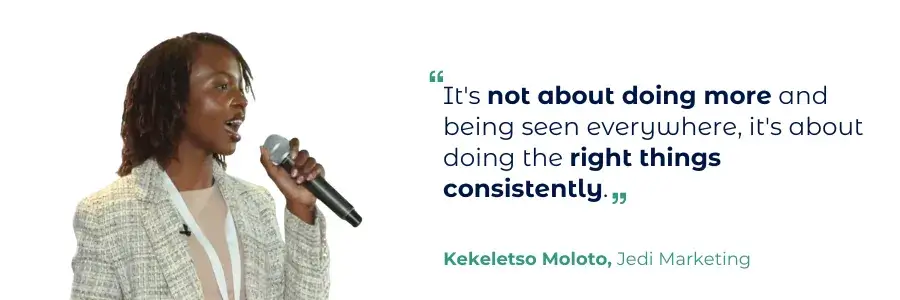
What This Means for Your Business?
The 𝟑 𝐂’𝐬 𝐅𝐫𝐚𝐦𝐞𝐰𝐨𝐫𝐤 offers small businesses a disciplined alternative to reactive or copycat marketing. By prioritising clear objectives, simple messaging, and manageable tactics, SMEs can achieve measurable growth without wasting resources.
Importantly, small businesses already possess inherent advantages over corporates:
✅ The ability to form 𝐠𝐞𝐧𝐮𝐢𝐧𝐞 𝐜𝐮𝐬𝐭𝐨𝐦𝐞𝐫 𝐜𝐨𝐧𝐧𝐞𝐜𝐭𝐢𝐨𝐧𝐬.
✅ The agility to 𝐚𝐝𝐚𝐩𝐭 𝐪𝐮𝐢𝐜𝐤𝐥𝐲.
✅ 𝐀𝐮𝐭𝐡𝐞𝐧𝐭𝐢𝐜 𝐬𝐭𝐨𝐫𝐢𝐞𝐬 that resonate with audiences.
When these strengths are harnessed strategically, they can become powerful growth levers.
The path forward is straightforward: 𝐝𝐞𝐟𝐢𝐧𝐞 𝐨𝐧𝐞 𝐜𝐥𝐞𝐚𝐫 𝐠𝐨𝐚𝐥, 𝐫𝐞𝐟𝐢𝐧𝐞 𝐲𝐨𝐮𝐫 𝐦𝐞𝐬𝐬𝐚𝐠𝐞 to resonate with customers, and 𝐬𝐞𝐥𝐞𝐜𝐭 𝐭𝐚𝐜𝐭𝐢𝐜𝐬 you can execute 𝐜𝐨𝐧𝐬𝐢𝐬𝐭𝐞𝐧𝐭𝐥𝐲**.**

Concluding Thought
Marketing success is not about chasing every trend or mimicking corporate strategies. It is about knowing what you want to achieve, how you communicate it, and where you can show up often, without fail.
Keke’s message is a timely reminder: 𝐬𝐦𝐚𝐥𝐥 𝐛𝐮𝐬𝐢𝐧𝐞𝐬𝐬𝐞𝐬 𝐝𝐨 𝐧𝐨𝐭 𝐧𝐞𝐞𝐝 𝐛𝐢𝐠𝐠𝐞𝐫 𝐛𝐮𝐝𝐠𝐞𝐭𝐬; 𝐭𝐡𝐞𝐲 𝐧𝐞𝐞𝐝 𝐬𝐡𝐚𝐫𝐩𝐞𝐫 𝐟𝐨𝐜𝐮𝐬.
🟢 𝐅𝐨𝐫 𝐦𝐨𝐫𝐞 𝐦𝐚𝐫𝐤𝐞𝐭𝐢𝐧𝐠 𝐞𝐱𝐩𝐞𝐫𝐭 𝐚𝐝𝐯𝐢𝐜𝐞, watch Keke’s full talk from Edge Growth’s Investee Day on YouTube 👉 https://tinyurl.com/599e65tr
🟢 Access tools and resources for your business growth on our SME Hub 👉 https://tinyurl.com/yhdjt5rx


